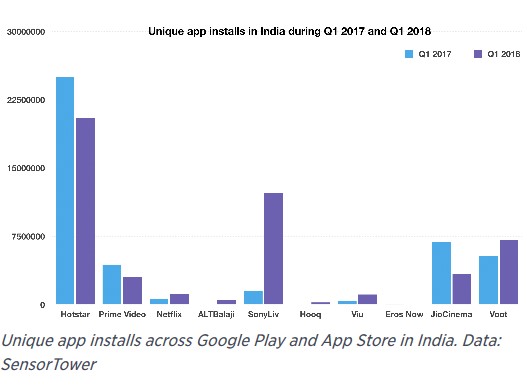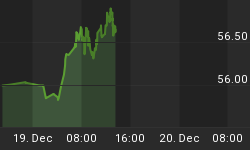Bingeing on Netflix Inc. (NASDAQ:NFLX) is the new norm in many parts of the world. Netflix subscribers collectively watch more than a billion hours of content every week, more than they spend hanging out with friends, reading and exercising combined.
Investors love Netflix, too, but for a different reason. And with Netflix expected to report Q2 2018 earnings on July 16, all eyes will be on a key metric.
All-Weather Stock
NFLX stock has proven to be that rare all-weather stock that’s capable of putting up a show even in down markets.
NFLX stock has returned a mouth-watering 118.3 percent in the year-to-date, second only to Fossil Group Inc.’s (NYSE:FOSL) eye-popping 271-percent gain and far above the market benchmark’s 4-percent gain.
An alien looking at Netflix price charts would imagine the company as being highly dominant, growing like a weed and extraordinarily profitable.
While Netflix checks off some of the items on that checklist, it glaringly misses on one—profitability.
The company’s net margin of 7.8 percent is just average for the media industry and nowhere near the league of your average software company. You see, Netflix does not fit the classic four-walled paradigm of discounted present value. Rather, Netflix stock is almost wholly judged on a single metric—subscriber growth. Related: The 5 Worst S&P 500 Performers Of The Year
The single most important reason why NFLX is red-hot this year can be pinned on Q1 2018 results where the company posted better-than-expected user growth after adding 1.96 million domestic subscribers vs. 1.48 million expected and 7.41 million in international markets vs. 6.5 million expected. Netflix said it expects to add 6.2 million subscribers during the second quarter, nearly a million more than the consensus on Wall Street.
Growing Everywhere, But Not In Asia
Investors have mostly been pleased that Netflix has been successful at offsetting slowing subscriber growth at home with faster growth abroad.
The 7.4 million net adds for international subscribers during last term represented a 50-percent year-over-year growth, a high-watermark for the company. The video streaming giant now has more international subscribers (68.3mm) than domestic ones (56.7mm).
Yet, Netflix’s glittering résumé features one large blemish—failure to capture the giant markets of Asia. Unlike US companies such as Apple and Disney, which are big household names in China and India, Netflix has so far failed to crack these markets mainly due to the sheer dominance of the local streaming companies.
In China, Baidu spinoff iQiYi is the 800-pound gorilla with 60 million video streaming subscribers, good for 75.3 percent of the streaming market according to data from eMarketer.
It’s a neck-to-neck battle though between iQiYi and Tencent with iResearcher reporting that Tencent Video had 790 million streaming devices in January--100 more than iQiYi’s. Alibaba-owned Youku Tudou is not far behind either, owning a 61.6 percent slice of the market (the numbers exceed 100 percent suggesting that many people subscribe to multiple streams).

(Click to enlarge)
Source: eMarketer
Netflix is not directly accessible in China mainly due to strict censorship, and it appears to have resigned itself to licensing original content to the likes of iQiYi. With the Chinese video streaming market expected to increase more than five-fold between 2015-2020 to $17.6 billion, Netflix will definitely be missing out big there.
Netflix has fully entered the Indian market, but is having an almighty struggle there as well.
Related: Can Gold Prices Be Manipulated?
India’s internet infrastructure and data costs have improved dramatically and sparked massive growth of an industry once considered a preserve of the rich and affluent. Leading the on-demand local streaming services is India’s own Hotstar with 150 million active monthly users, or 70 percent of the Indian market. Netflix’s numbers? Just a million subscribers.

(Click to enlarge)
Source: CNN Money
In all fairness, there’s probably not much that Netflix can do about the whole situation. Top-dog Hotstar bandies out 80 percent of its ad-supported catalog free of charge, while charging about 199 rupees (roughly $3) per month for the premium tier. In comparison, Netflix’s content is always ad-free, with the base tier in India going for $7.30 per month.
Amazon Prime Video appears to be doing better than Netflix with nearly three times as many subscribers in India. But Amazon is succeeding by leveraging aggressive pricing—Amazon Prime, including video and free shipping, costs Rs 129 ($1.90) a month or Rs 999 ($14.50) a year in India compared to $119 per year in the U.S.
Netflix will have to strike a fine balance between growth and profitability in these markets, bearing in mind that most of its international markets are only thinly profitable.
By Alex Kimani for Safehaven.com
More Top Reads From Safehaven.com:
















